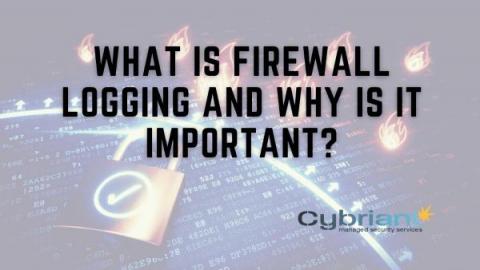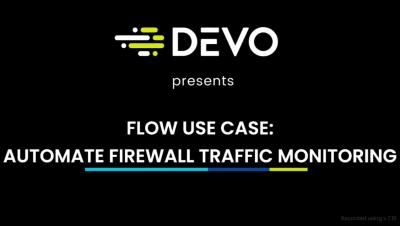Security | Threat Detection | Cyberattacks | DevSecOps | Compliance
Logging
5 Telltale Signs You're Running a Cloud-Hosted - not a Cloud-Native - SIEM
The necessity of a SIEM for organizations and their security teams has evolved dramatically over time. It has gone from edge use cases and compliance to the current form of threat detection, incident response, and threat hunting. As the use cases have changed, so has the architecture. As a result, organizations that have been quite familiar with running their SIEM on-premises are now looking for modern architectures to reduce the workload on their analysts. The simple choice: SaaS, of course.
What is Firewall Logging and Why is it Important?
Firewall logging is an important piece of your advanced security strategy. A firewall is a security system that helps protect your computer or network from unauthorized access. One important function of a firewall is to log information about each connection attempt, including who attempted to connect and when.
Analytics and Automation in the Autonomous SOC
SOC analysts suffer from alert fatigue caused by too many data sources and platforms, too little context in investigations, too few people, and too little time. Mature cybersecurity teams manage this challenge by leveraging an integrated set of data analytics capabilities from best-of-breed solutions to establish an end-to-end experience — from data collection to response.
Penetration Testing: Practical Introduction & Tutorials
You’ve built an awesome business — it is booming and making money. You’ve streamlined all the processes and operations. Business is good. But, when you build something great, it attracts cyber criminals. Your business is valuable to you and cybercriminals can leverage it. That’s why security is important. You can use different security approaches to secure your application, infrastructure and network. In this post we’ll focus on one such approach: penetration testing.
An Introduction to Windows Event Logs
The value of log files goes far beyond their traditional remit of diagnosing and troubleshooting issues reported in production. They provide a wealth of information about your systems’ health and behavior, helping you spot issues as they emerge. By aggregating and analyzing your log file data in real time, you can proactively monitor your network, servers, user workstations, and applications for signs of trouble.
Flow Use Case: Automate Continuous Firewall Traffic Monitoring
Data Eats the World: You'll Consume It Intelligently with the Autonomous SOC
“Software is eating the world.” That phrase entered the high-tech lexicon in 2011, courtesy of Marc Andreessen, co-founder of both Netscape and venture capital firm Andreessen Horowitz. His thesis is proven time and again. If you substitute data for software, it amplifies the power of Andreessen’s observation. Consider the following statistics on how much data is created every day: Technology users alone generate more than 1.145 trillion MB of data every day!
Flow Use Case: Automate Continuous Firewall Traffic Monitoring
Reducing Splunk spend with LimaCharlie
Endpoints as well as applications such as AWS, Google Cloud, Office 365, 1Password, Slack, and thousands of others produce vast amounts of data. The volume of security data is growing, and this growth will continue for the foreseeable future. This, in turn, leads to several challenges: To solve these problems, many companies have adopted Splunk as their SIEM (security information and event management) platform.









